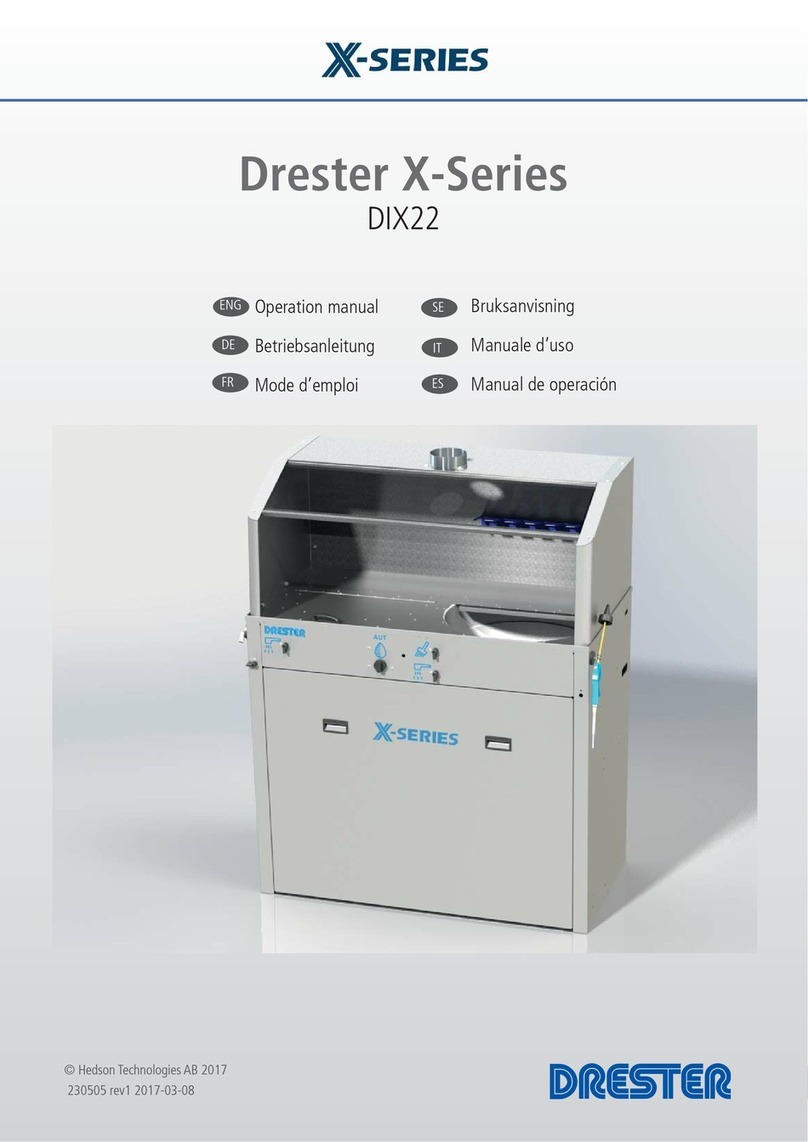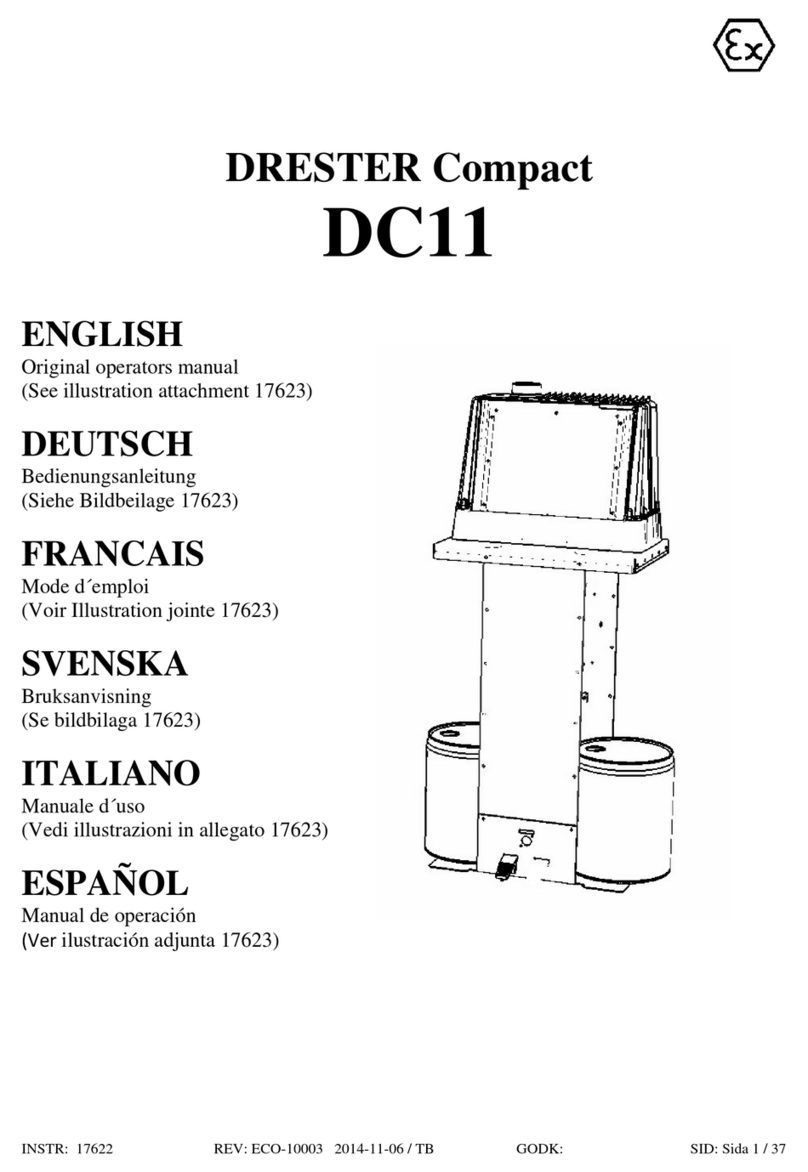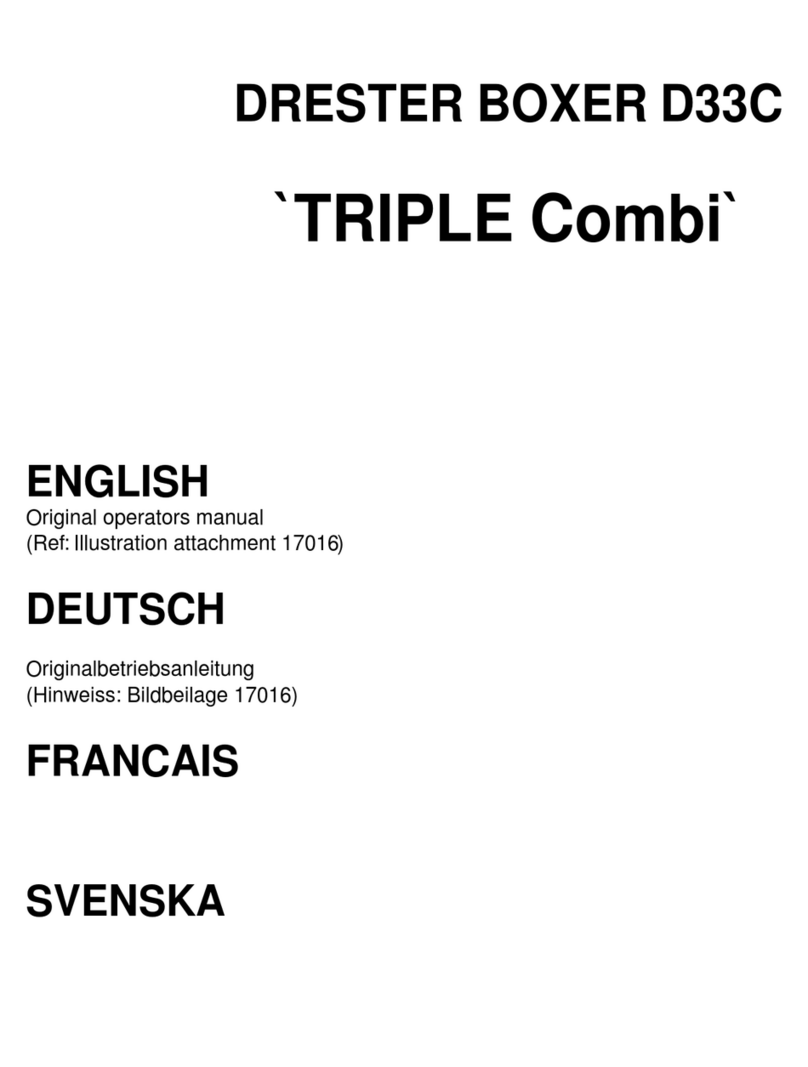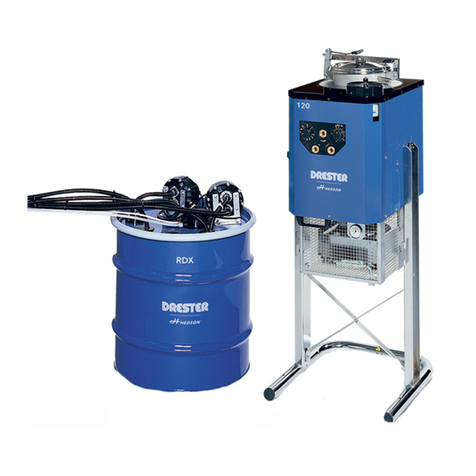
216017 rev 2012-02-29
CONTENTS original language
Purpose of the machine ...........................................................3
Assembly.................................................................................3
Placing the Unit.......................................................................3
Installation ..............................................................................3
Permitted solvents ...................................................................4
Permitted solvent drums ..........................................................4
Collecting tray .........................................................................4
Preparation for use..................................................................4
Operation instructions for the automatic washer.......................5
Operation instructions for the manual sink ...............................5
The coagulation process...........................................................6
Changing the filter...................................................................6
Service ....................................................................................6
Safety Information ...................................................................7
Technical data .........................................................................7
INHALTSVERZEICHNIS
Verwendungszweck.................................................................8
Montage .................................................................................8
Aufstellung des Geräts.............................................................8
Installation ..............................................................................8
Zulässige Lösemittel.................................................................9
Zulässige Lösemittelfässer........................................................9
Auffangwanne.........................................................................9
Inbetriebnahme .......................................................................9
Betriebsanleitung für die automatische Waschkammer............10
Betriebsanleitung für das manuelle Waschbecken...................10
Der Koagulierungsprozess......................................................11
Filtertausch............................................................................11
Wartung................................................................................11
Sicherheitsinformationen........................................................12
Technische Daten...................................................................12
SOMMAIRE
Domaine D’utilisation.............................................................13
Montage ...............................................................................13
Mise en place ........................................................................13
Installation ............................................................................13
Solvants autorisés..................................................................14
Bidons de solvant autorisés....................................................14
Bac récepteur ........................................................................14
Préparations pour l’utilisation ................................................14
Instructions d’utilisation du laveur automatique......................15
Instructions d’utilisation de l’évier manuel..............................15
Le processus de coagulation ..................................................16
Changement de filtre.............................................................16
Entretien ...............................................................................16
Informations de sécurité.........................................................17
Caractéristiques techniques....................................................17
INNEHÅLLSFÖRTECKNING
Användningsområde..............................................................18
Montering .............................................................................18
Placering ...............................................................................18
Installation ............................................................................18
Tillåtna lösningsmedel ...........................................................19
Tillåtna dunkar ......................................................................19
Uppsamlingskärl....................................................................19
Idrifttagande .........................................................................19
Bruksanvisning för automattvätten ........................................20
Bruksanvisning för den manuella vasken ................................20
Koaguleringsprocessen ..........................................................21
Byte av filter..........................................................................21
Service ..................................................................................21
Säkerhetsinformation.............................................................22
Tekniska data ........................................................................22
INDICE
Destinazione d’uso dell’apparecchio.......................................23
Montaggio ............................................................................23
Posizionamento .....................................................................23
Installazione..........................................................................23
Solventi consentiti .................................................................24
Fusti di solvente consentiti.....................................................24
Vaschetta di raccolta..............................................................24
Preparazioni per l’uso ............................................................24
Istruzioni per l’uso della vasca automatica..............................25
Istruzioni per l’uso del cestello manuale .................................25
Il processo di coagulazione ....................................................26
Sostituzione filtri....................................................................26
Manutenzione .......................................................................26
Avvertenze di sicurezza..........................................................27
Dati tecnici ............................................................................27
CONTENIDO
Aplicaciones de la máquina....................................................28
Montaje ................................................................................28
Ubicación de la unidad ..........................................................28
Instalación.............................................................................28
Disolventes permitidos...........................................................29
Bidones para disolventes permitidos.......................................29
Bandeja de recolección ..........................................................29
Preparaciones para el uso ......................................................29
Instrucciones de operación del lavador automático.................30
Instrucciones de operación del lavadero manual .....................30
El proceso de coagulación......................................................31
Cambio del filtro....................................................................31
Mantenimiento......................................................................31
Información de seguridad ......................................................32
Datos técnicos.......................................................................32
ENG
DE
FR
SE
IT
ES































